| Label | Label Description | Images |
| Magenta |
This was an 8" disc manufactured by Edison
Bell in Britain, for export to France. Label image courtesy of Bill Dean-Myatt. |
_small.jpg) |
| Magic Record |
This was a 8" vinylite disc produced in the
1950s for Raphael Tuck & Sons as part of their "Magic Gramophone And
Record". It is not known what the magic actually was, but the late Eddie
Shaw reported that they came in a box complete with a colouring book and
water colours. Label image courtesy of Arthur Badrock. Size information from Paul Buck. |
 |
| Majestic | These were produced in Blackpool, Lancashire by the North British Recording Company. The owner was Harry Wilkinson, whose patent mentioned on the label actually refers to a home-recording system. Majestic records date from 1933 - 1934 and seemed to be made on a rather ad-hoc basis, so were most likely to have been privately produced (rather like Teledisk), rather than sold in any shops. |
|
| Manchester Recording Studios |
A privatre recording company based in Manchester. The label's design is
very pre-WWI in style, but the record is probably from the 1940s or
1950s. Label image courtesy of Bill Dean-Myatt. |
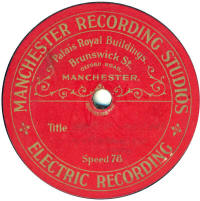 |
| Manor |
The Manor record label was a product
of Northern Sound Services, who were based in Newcastle-upon-Tyne in
Northumberland, at Broad Chare, Quayside. Northern Sound Services did
their own recordings and pressed records as well.
NSS's own label, called Northern Sound Services, was for private or personal recordings, whereas Manor was a commercial label, the records costing 5/9 and dating from the early to mid 1950s. Their masters usually had NSS- prefixes and can be found on other small British labels of the period, buch as Bajedo and Nigerian Accurate records, both produced for exporting to West Africa. The Manor issues generally had MRC- prefixed masters but also show a 0 (or O) prefixed number which implies a link with Levy's Oriole records. It is thought that Levy's pressed most of the Manor issues, presumbly because, as a commercial proposition, higher numbers were being made than could be produced in NSS's own plant. Thanks to Bill Dean-Myatt for providing the label photo. |
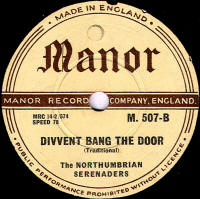 |
| Marathon |
A very early long-playing
record, Marathon were available from 1912 to 1915. It was the
invention of Percy J. Packman who hit on the idea of a v-shaped
vertical-cut groove which allowed a very fine pitch to be used while
still maintaining 80 r.p.m, which gave 5-minutes of playing time on a
10" disc and 8 minutes on a 12". Labels were grey with black
and white printing and an inordinate amount of information printed on the
sleeve. The 10" series started at 101 and ran to 473, the 12" ran from
2001 to 2065. The records cost 2/6 for 10" and 4/- for 12" discs. The flourish under the label name was printed in differnt colours depending on the type of repertoire. Thanks to Bill Dean-Myatt for providing the label photo. |
|
| Marconi | An American made record which was imported into Britain briefly from October 1907. It was a flexible "unbreakable" record (single-sided) with a card or thick paper core, coated in a hardened plastic surface on which the groove was pressed. Marconi is said to have been the inventor of this type of disc record. They were manufactured by the American Graphophone Company using Columbia masters, and available in 10" and 12" size., but the British side of the business was not handled by Columbia, as one would expect, but by various appointed factors. |
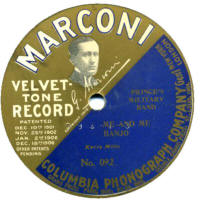 |
| Marspen | These 5½" and 6" discs were sold by branches of Marks & Spencer (hence the name) in the mid-1920s. The pressings were done variously by Edison Bell (catalogue 600 upwards) and Crystalate (catalogue 250 upwards) using masters from their equivalent labels (Bell and Mimosa), though many of the Crystalate-produced ones have a special matrix series starting MS-01 which was recorded specially for Marspen (though some at least can be found on Mimosa issues). |
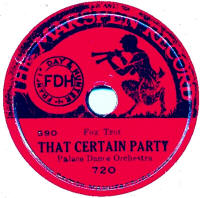 |
| May-Fair | May-Fair records were available between 1931 and 1933 and were not sold in the usual manner, but exchanged for Ardath cigarette coupons. The records were pressed mainly by Brunswick and Piccadilly, and later by Edison Bell and Decca, and some labels show that they were selected by the ubiquitous Christopher Stone (known as Britian's first "Disc Jockey"). The catalogue series are in a G-2000 range which, on reaching about 2262, drops the first digit, finally reaching about G-360 before Ardath withdrew the offer and disappeared from the market themselves soon after. (Some records have prefix letters other than G- but the reason behind this is not known). It is believed that Selfridges bought up the unused stock in 1933 and sold them in their department stores. |
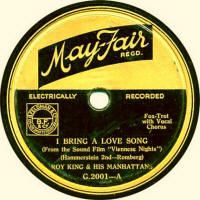 |
| Mead & Field's |
Mead and Field were manufacturers of novelties for Christmas and
parties. The company was formed in 1910 and were still in business in
1960. The records such as the one shown here were made for them by
Duophone and seem to be mainly pulled from the late 1920s D-500 and
F-2000 series, usually in the same couplings as the Duophones. The Mead
& Field's labels had black printing but the background colour varies;
also sometimes the label was just pasted over an existing Duophone,
other times they are properly pressed in labels.. They had no catalogue
numbers, though a registration number is sometimes shown. The performers
are often anonymous. Information from Frank Andrews' article in "For The Record", issue 20. Label image courtesy of Bill Dean-Myatt. |
|
| Mecca |
These were produced for Mecca Dance Halls and were most likely
strict-tempo dance records. Neither Frank Andrews, nor myself have seen
any examples, so did any 78rpm discs with this label name actually
exist? The similarity in name to "Decca" may mean the latter company objected to Mecca being used as a record label name. |
|
| Melba |
Melba records were
made by the Metropole Gramophone Co using matrices also available on
Metropole and/or Piccadilly. The reason for the label's existence is not
yet known and the very plain label gives no clues. The catalogue numbers
are in an 1000- series running (probably) from 1001 to about 1070. My thanks to Charles Hippisley-Cox for the label scan. |
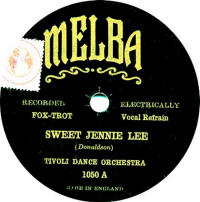 |
|
Mellotone
(sold in Australia) |
A 6" disc pressed by Crystalate using Mimosa / Kiddyphone masters which was made in England in the 1920s, but only made available in Australia. From examples I have seen, the catalogue numbers exactly match those on Kiddyphone. |
|
| Melodisc |
A post-WWII jazz label issuing mainly, or possibly only, new
American jazz recordings, Melodisc records first appeared in September
1949 and cost 5/9. They were distributed by the International Book Shop
of 52, Charing Cross Road, London and also Farley Radio Services, and were also available from record
dealers. The Melodisc Record Co. Ltd was at 12, Earlham Street, London
WC2. There were a number of different catalogue series: 1000 - 1035 (10") ; 1100 - 1600 (10") ; 5000 - 5019 (10") ("ethnic") ; 8000 - 8012 (12") ; P-200 - P-240 (10") The last 78s were produced in 1960. The pressing are belived to have originally done by Oriole, with later copies and re-pressings by Decca. Thanks to Bill Dean-Myatt for providing the label images. |
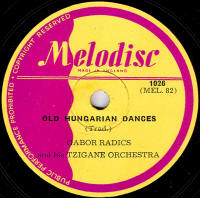 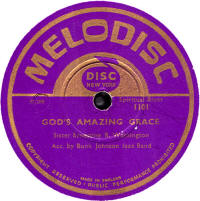 |
| Melody Record |
These were produced for Morgan & Scott of London during 1918 and used
Invicta & Guardsman masters, some dating as far back as 1913. The records state "Made in England" and were made by Crystalate, who pressed Guardsman records at the time. Frank Andrews reports that the first issue of the records was in November 1918, and contained 12 records; a mixture of 10" (at 3/-) and 12" (at 5/-). As can be seen by the listing here, only about 30 different Melody Records seem to have been produced, with catalogue numbers running from 251 to 279 (irrespective of the record's size); this may represent only 3 issues; Frank says they were never mentioned in the trade journals. |
|
| Melograph |
The Melograph record company was
based in Liverpool from about 1907.
Initially the records were
manufactured in Germany, by Hess & Co. of Berlin. By 1908, Melograph had
their own recording facilities in Liverpool, though all known examples
of the records still show them as being made in Berlin. |
|
| Meloto | Meloto are much better known for their piano-roll production than their records which were pressed for them by Vocalion at some point during the 1920s, The catalogue ran from S-1001 up to about S-1800 and included recordings from 1920 to about 1927. The label design remained the same throughout. |
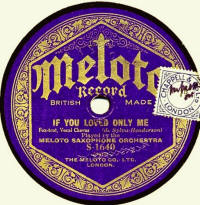 |
| Memorial Record |
This was a special 12" record made by Columbia, of the funeral
service of the unknown soldier, which took place at Westminster Abbey on
November 11, 1920. Apart from the historical importance of the occasion itself, also very important from a gramophonic perspective is this was the first issued electrical recording, 5 years before it became commercially used. This recording was taken by Guest & Merriman. The record sold for 7/6 and the money to go to The Westminster Abbey restration fund. |
_small.jpg) |
| Mercury |
There are three versions of the UK Mercury label in the 78rpm era, produced by three
different companies. They all date from the mid-to-late 1950s, and I'm pretty sure they appeared in this order: Type 1 shown was made by Levy's Oriole records, dating from 1954-55. Type 2 shown was a Pye product, usually pressed in vinyl, dating from 1956-58. Type 3 shown was made by EMI, who also produced 45rpm & LP records using this name. The 78s date from 1958 to 1960. In about 1963-64 the name passed to Phillips, but obviously this is post-78rpm period. Thanks to Bill Dean-Myatt for providing the label images, and to Dave Timpson for helping to get the ownership of the label into sequence. |
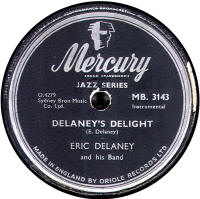 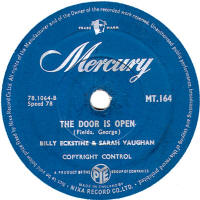 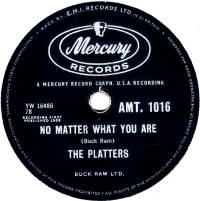 |
| Metropole | First appearing in April 1928, Metropole records were 3/- (15p) each, but tended to have strange couplings such as a dance title on one side and a glee club on the other! The catalogue numbering started at 1001 and ran to over 1300 before being withdrawn. Matrix numbers were initially in an M-1 series, but these were soon dropped and the label just became an outlet (albeit an very expensive one) for Piccadilly masters, though to start with there were a number of occasions where the Metropole and Piccadilly recordings of the same popular numbers were by different artists. Metropole also took part in a fund-raising campaign for private hospitals. A selection of records were made available for 2/6. There was a ballot and competitors have to estimate the popularity of the record on the list. The first winner (Major J Reynolds or Kelvedon, Essex) won £1000 (a lot of money in those days). |
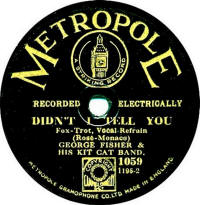 |
| MGM | MGM in the UK was an EMI label and mainly issued soundtrack recordings from Hollywood musicals along with a mixture of mainstream jazz and light orchestral music. The label was introduced in the 1950s and survived into the 1970s, though, obviously by then, was no longer a 78 rpm disc. |
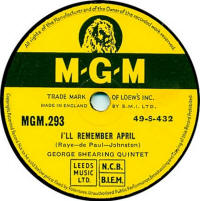 |
| Mignon | A 6" German-produced disc from 1912. The catalogue numbers started at 1 and reached at least 14. They were part of a "deal". For £1, you got a mini-gramophone, and an album of 6 Mignon records, some needles and a carry-case. They were manufactured by Beka/Lindström. |
|
| Mildmay |
Possibly a one-off issue. The record was made by EMI and issued (if that
is the right term for a private record) in their private JH series. The
record dates from about 1936. Thanks to Bill Dean-Myatt for providing the label image. |
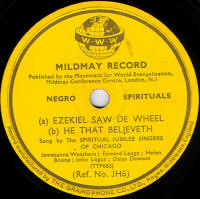 |
| Millophone |
These were produced for a Mr.
H. Mill from 1908 to about 1913, who ran the Millophone Record Company at
64, Bishopsgate, London. Initially, the label was just
"Millophone" and Nicole masters were used. This type is
extremely rare and some, or maybe all, had handwritten title & artiste
details with a green label background. Then the name became "Millophone New Record" and drew from Edison Bell's "Bell" and "Winner" discs, with a green label. Then later it was styled the "Millophone New Celebrity Record"and drew from Edison Bell Velvet Face records. |
|
| Mimosa | Crystalate's most popular "baby" record was introduced in 1921 as a 5½" single sided disc with an M-100 series numbering system. Soon becoming double sided with a P-1 series catalogue, these records sold for 6d at Woolworth's. They always had a non-copyright title on one side, to save on costs. Having reached about P-240, the size was increased to 6" and, confusingly, the catalogue started at P-1 again! This reached about P-240 (again) before being withdrawn in 1928 in favour of the new 7" Victory record. Matrix numbers were generally in an W-series for the 5½" recordings and an E-series for 6" (apart from some MS-01 range ones - see Marspen records), but there are some A-01 series ones which are (usually) edited dubs from American masters (from Banner). |
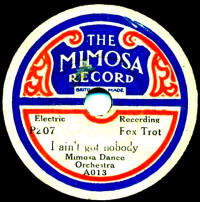 |
| Minstrel |
Similar to
"Herald" records, "Minstrel" were produced for
a Mr E.W. Pidgeon of Christcurch, New Zealand from 1913. There were two
catalogue series: A single digit start (i.e. 1 upwards) to about 60
produced by Edison Bell in London and a second series starting at 2000
running up to about 2020 used masters from Favorite. The "Favorite" ones
state "Made Abroad" on the labels. My thanks to Adam Miller for allowing me to show his listing of this label on my website. Click here to go to Adam Miller's site to find out more about 78rpm records in New Zealand. Thanks to Rainer Lotz and Adam Miller for the label images. |
_small.jpg) |
| Miusical |
Made in England for export to the
Middle East. Any further information gratefully received! The second style does at least tell us it was made by Oriole. Note the unusual spelling of the label name! Rainer Lotz has provided the first label photo, and apologizes for the quality of the image. The second image is from Bill Dean-Myatt. |
_small.jpg) |
| Mood Music |
This was the library music label belonging to the Francis, Day &
Hunter music publishers. The records date from the 1950s and 1960s and are [ressed in both shellac and mainly vinyl forms. Some, like the example here were recorded & manufactured by EMI, later issues have "FDH" in place of the EMI logo and may be made by another company. |
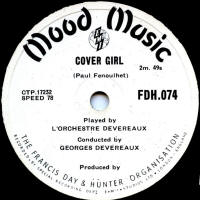 |
| Moon |
This was a little-known music publishing company. The record
here dates from 1940. The record example here was recorded & manufactured by Decca. Thanks to Bill Dean-Myatt for providing the label photo. |
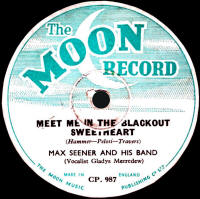 |
| Mount Melleray |
Mount Melleray is an abbey in Ireland, and presumably this
record was privately produced for the abbey. Thanks to Bill Dean-Myatt for providing the label photo. |
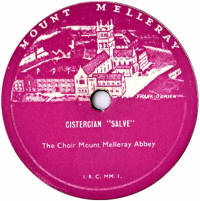 |
| Mozart Edition |
This example dates from 1964 and based on the fairly low number
of 125, I would imagine all 78s on this label date from the 1960s. It appears to be a music publisher's label, with an example of light music of the period. Thanks to Bill Dean-Myatt for providing the label photo. |
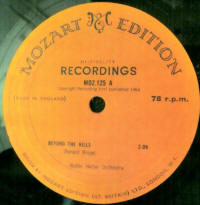 |
| MRS |
The MRS (Motta's Recording Studio)
records were manufactured in England, according to the label, for
Stanley Motta Ltd, of Kingston, Jamaica. I'm guessing they date from the
1950s, but I don't know who was manufacturing them. Thanks to Richard Prout for providing the label photo. |
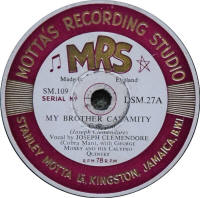 |
| MSS |
Most collectors will be familiar with MSS as they were one of
the major manufacturers of acetate (lacquer) discs used by private
recording studios. MSS also sold disc recording machines for use with
their lacquer discs. However, they also did semi-commerical records,
such as the one seen here, which was pressed by someone else, probably
Oriole or Decca, from an off-air recording in the 1930s. MSS originally stood for Marguerite Sounds Studios (later Master Sound Studios). It was started up by Cecil Watts and named after his partner (later his wife). Watts developed the lacquer disc in Britain, after he was present at a recording session in the 1920s and seeing the huge effort and time wasted by the major record companies in setting up and using the thick wax masters. He developed the lacquer discs in the early 1930s, but even so, the major companies didn't start using them until the 1950s, I believe. Watts, having sold the rights to his discs during the war, later became well-known for his invention of the "dust bug" which all vinyl collectors are familiar with and is a must to keep the nasty dust of your prized records, vinyl or shellac. Thanks to Bill Dean-Myatt for providing the label photo. |
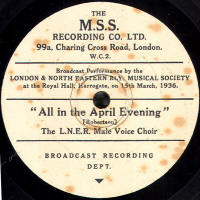 |
| Music De Wolfe | De Wolfe was a music publishing company and their own label, Music De Wolfe issued much in the way of library music, used by cinemas and broadcasters. |
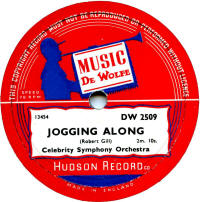 |
| Music Master |
These records were pressed by
British Homophone Ltd using ex-Filmophone masters; the records probably
date from about 1934. Thanks to Bill Dean-Myatt for providing the label photo. |
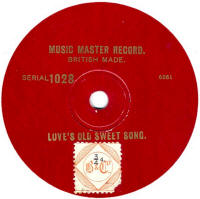 |
| Musogram |
Musogram "Long
Playing Record" was another brainchild of Percy Packman (see
"Marathon". These actually pre-date Marathon, as they first
appeared in 1909. They were vertical-cut with a fine U-shaped groove
giving an extended playing time. The following year came Musogram
"Living Record" which has a coarser groove rather like Pathe
discs (example right) . Thanks to Bill Dean-Myatt for providing the label photo. |
|
|
Musola
(sold in Australia) |
A close relative of "Phoneto",
Musola appeared in 1917. They were pressed by Crystalate from Guardsman
masters and exported to Australia.
After many years, I now have two colour images of this label, showing the two known designs.
Thanks to Adrian Smith for the yellow and green image. |
_small.jpg) _small.jpg) |
| My Record | This was a 6" plastic or vinyl record made by Louis Marx & Co in the 1970s for children. This must have been the "last gasp" for childrens' 78s? |
|